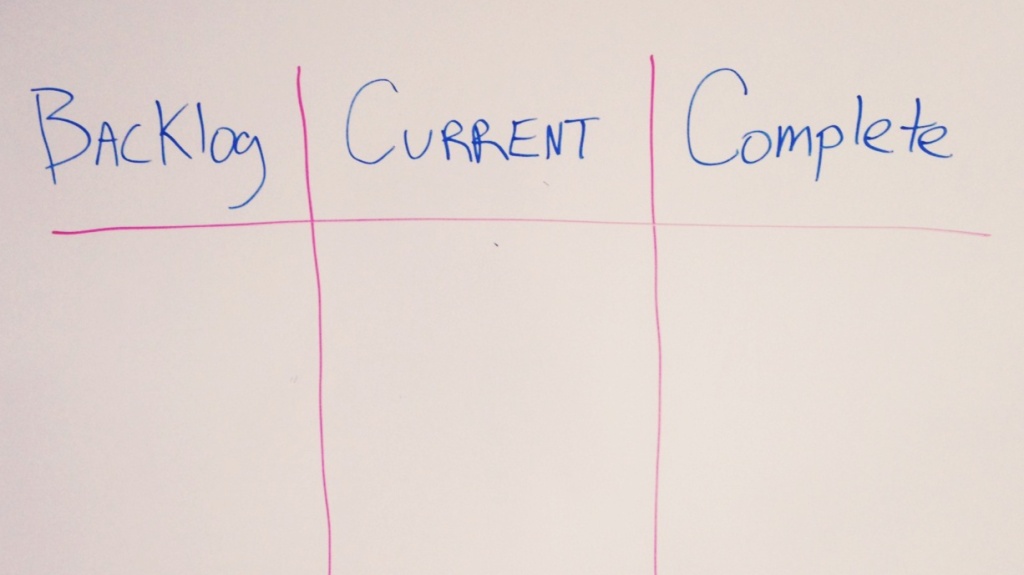The worst part about project management tools is they get in the way.
Most tools require hours of configuration and a steep learning curve before you can even start being productive. And every time you bring on a new team member, you need to go through the process again.
This is why I love Kanban boards. Kanban simplifies project management by letting you and your team get started right away.
At its simplest, a Kanban board has three columns:
- Backlog: the work you’ve committed to doing.
- Current: what you’re currently working on.
- Completed: the work you’ve finished that’s ready to be reviewed or deployed.
In the early days1, Kanban was a physical board you’d have in your manufacturing plant. Team members would use index cards to represent each item of work. In the morning, each worker would pick an item in the Backlog and move it to the Current column. Once it was finished, they would move it to Complete.
More recently, software teams, agencies and other knowledge workers started using Kanban to manage their processes.
Here’s why it’s effective:
It’s visual
A Kanban board creates a visual image of the work that needs to be done. It’s different than having a text-based checklist; each item of work is represented by a card, and each stage (Backlog, Current, Complete) is represented by a column.
It’s transparent
When your work is represented visually, it has an added benefit: everyone in the team knows what’s being worked on, and by whom.
This means you don’t need to tap your co-workers on the shoulder and ask them if their tasks are done. You can see it right there on the Kanban board.
It’s flexible
You and your team can customize your Kanban philosophy so that it fits your workflow.
Want to use sprints? Each sprint, put the work you’ve committed to in the Backlog (and don’t allow anyone to add to it once the sprint’s been started). At the end of the sprint, have everyone demo what’s in the completed column. Put any unfinished work back in the backlog for next week’s sprint.
Want to limit work in progress? Limiting WIP means that each worker only works on one thing at a time. Kanban makes it easy to enforce this: each team member can only have one task in the Current column. Limiting WIP reduces the cost of context switching by forcing each member to focus exclusively on the task in front of them.
Want to get started?
The easiest way to get started? Get a whiteboard and draw three columns on it:

You can use Post-it notes (or index cards) to represent each item of work.
How do you manage off-site team members?
If you have a bigger team with distributed offices and employees, you’ll want a digital solution. Sprintly was built with this in mind.
You and your team can get started here.
Why your team needs a Kanban board
I’ve been managing projects for 16 years, and I haven’t found anything that matches the effectiveness of Kanban. It’s a simple way to keep a team focused on what matters: moving forward.
Create your own Kanban board here, for free.
- Toyota began using a Kanban system in it’s machine shop in 1953. Source: Ohno, Taiichi (June 1988). Toyota Production System – beyond large-scale production. Productivity Press. pp. 25–28. ISBN 0-915299-14-3. ↩


